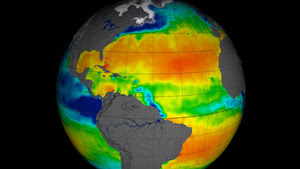For the very first time, a man-made object has reached the cosmic abyss beyond the farthest reaches of our solar system. As of today, Voyager 1 is the first spacecraft to begin the endless journey into deep space.
Launched way back on September 5th, 1977, Voyager 1 has been blasting along towards the edges of the heliosphere at 10.72 mile per second, faster than any other man-made object to date. On its way out there, it explored Jupiter in '79 and Saturn in '80. We've known Voyager 1 was going to peace out sooner or later, but now a study in published Geophysical Research Letters has made it official.
From the release:
Launched way back on September 5th, 1977, Voyager 1 has been blasting along towards the edges of the heliosphere at 10.72 mile per second, faster than any other man-made object to date. On its way out there, it explored Jupiter in '79 and Saturn in '80. We've known Voyager 1 was going to peace out sooner or later, but now a study in published Geophysical Research Letters has made it official.
From the release:
Voyager 1 isn't headed toward any particular star, but it'll be making a "close" (1.6 lightyear) flyby past Gliese 445 in just 40,000 years. Don't expect to hear about that though; strategic shutdown of its sensors will start in 2020, and by 2030, there won't be any power left. But there will be a little—albeit lifeless—bit of humanity cruising endlessly among the stars. And that's awesome, in the most literal way. More here.Thirty-five years after its launch, Voyager 1 appears to have travelled beyond the influence of the Sun and exited the heliosphere, according to a new study appearing online today.The heliosphere is a region of space dominated by the Sun and its wind of energetic particles, and which is thought to be enclosed, bubble-like, in the surrounding interstellar medium of gas and dust that pervades the Milky Way galaxy.















































